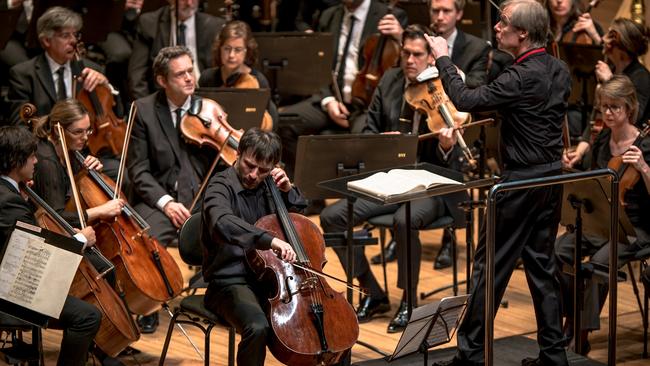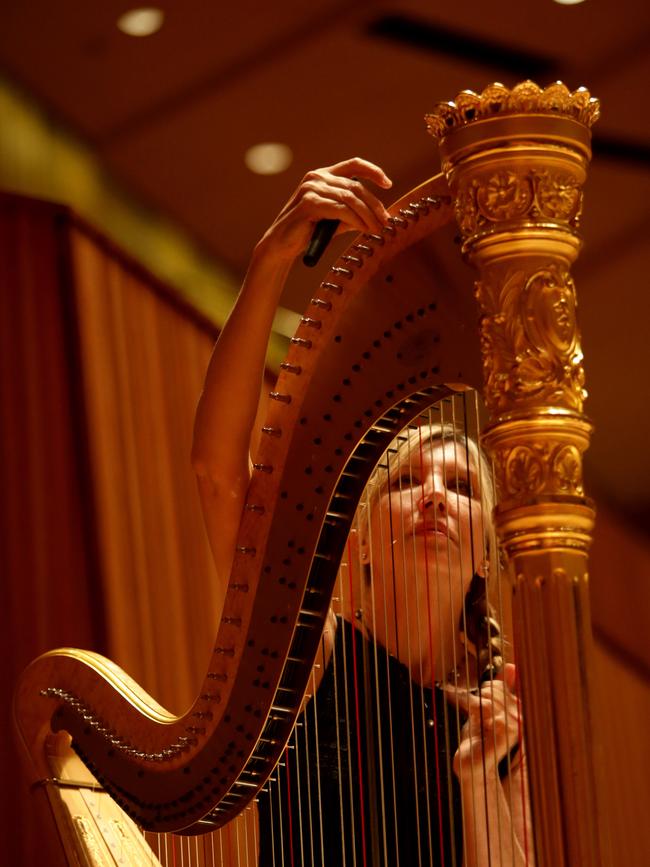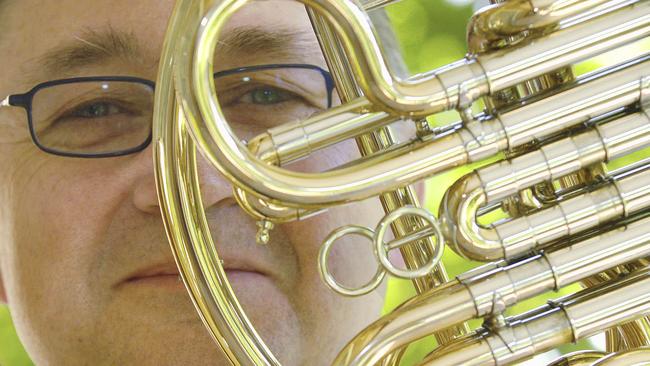Hard working harpists, some mellow cello and a few laughs hit right note
HAVE you ever seen a fat harpist? I know I haven’t and Sydney Sydney’s performance of Elliott Carter’s Variations for Orchestra helped me understand why.

Wentworth Courier
Don't miss out on the headlines from Wentworth Courier. Followed categories will be added to My News.
- Blind pianist raises the roof
- ACO shows off its party tricks
- Bach with some hints of Spanish
- Downsized to delight
HAVE you ever seen a fat harpist? I know I haven’t and Sydney Symphony’s performance of Elliott Carter’s Variations for Orchestra helped me understand why.
Normally Louise Johnson’s harp is set off to the side of the stage at the back, but for this work she and colleague Julie Kim were placed closer in and therefore more visible. Like the duck, much of what a harpist does is usually out of sight for while their fingers are plucking and damping the strings their feet are working seven pedals which change the pitch.
To the observer it looked at times as if the pair were trying out for a seated version of Riverdance.

All their skills were needed for this 25-minute piece which chief conductor David Robertson described as “fascinating, inspired and unlike anything you’ve ever heard”.
I’m not sure the audience agreed as the applause at the end was polite rather than inspired.
The American maestro met Carter a couple of years before he died at the age of 104 and asked him how he was able to remember all the trills on an oboe and Carter replied: “I like to think I pay attention.”
POINTILLISM
The piece, with its rapid changes of mood, tempo and dynamic was described by Robertson as a series of “character sketches” rather than variations in the conventional sense. For this listener it was an enjoyable form of musical pointillism, with brass and winds adding tiny specks of colour to the strings.
A showcase for the full orchestra, at times the forces were stripped back to chamber ensemble proportions, at others exploiting the full battery of extensive brass and percussion sections.
This entertaining and imaginative program started and ended with works portraying men who weren’t “all there”.
Joseph Haydn is often referred to as jovial and nowhere is his humour more on show than in his Symphony No. 60, nicknamed Il distratto, which was composed for a court production of a play about an absent-minded suitor.
Robertson and his band milked the jokes for all their worth, the conductor seeming to lose the plot in the first movement and taking a peek at concertmaster Andrew Haveron’s score to remind himself where he was.
LAUGHS
For the finale Haydn scored a false start, getting the leader to jump up to get the forgetful fiddlers to retune.
There were also some laughs, though tinged with sadness, for the final work, Richard Strauss’s tone poem based on episodes from Cervantes’ Don Quixote. Like the Carter work these are a set of variations, with the solo cello portraying the character of the would-be knight errant and the viola as his faithful squire Sancho Panza as they joust with windmills, attack an army of sheep and woo Dulcinea del Toboso.

SSO principal cellist Umberto Clerici gave a splendid performance with violist Tobias Breider lending excellent support.
The use of surtitles featuring text from the book — including the gem “dying is such a waste of good health” from the quixotic musical Man From La Mancha — added to the enjoyment. Robertson, always ebullient and communicative with his players and listeners, was very much the man for this job.
The concert also marked the curtain fall on the illustrious career of principal horn Robert Johnson who is retiring.
He got the biggest cheer of the night and a glowing tribute from Robinson, as well as the conductor’s bouquet.
DETAILS
● CONCERT: Don Quixote, Sydney Symphony Orchestra
● WHERE: Sydney Opera House Concert Hall
● WHEN: Saturday, June 17


